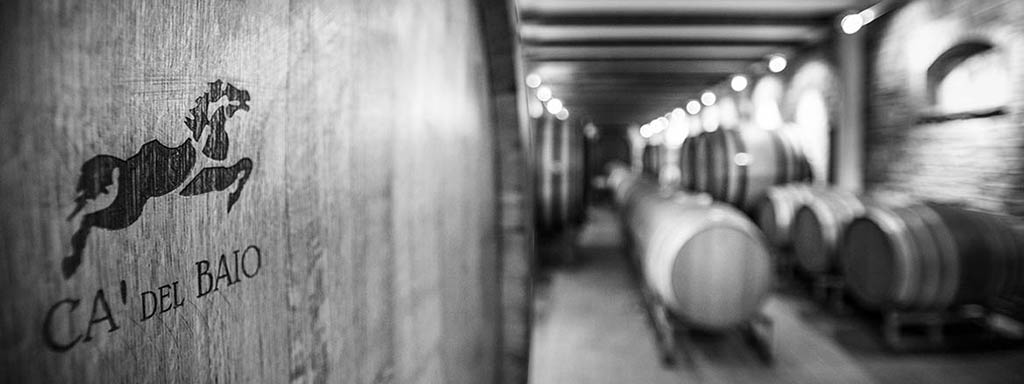Blog: Barbaresco | Classic
Barbaresco, like its great role model - the world-famous Barolo - comes from the northwest of Italy, more precisely from the Piedmont region. Moreover, both wines are made purely from Nebbiolo grapes and then aged in wooden barrels. However, there are significant differences between the two wines - not only in price - that contribute to their uniqueness and originality.
One of the main differences between Barolo and Barbaresco is the differentiated soil structure. Barbaresco soils are more nutrient-rich, which means that the grapes do not form as many tannins as they do in Barolo. Both wines have a characteristic bouquet reminiscent of roses and cherry fruit. The difference is most noticeable in the taste, the tannins of Barbaresco are not quite as hard as those of Barolo.
Considering the differences in soil characteristics, it is difficult to say which of the two zones is better suited to Nebbiolo grapes. The soils of both zones are essentially calcareous marl - a clay soil rich in lime. The lime present in the soil raises the pH, but this causes the grapes to develop a lower pH. This leads to a slight increase in acidity, which is an essential and important ingredient for high quality wines.
Also important are the rules for aging the two wines. Where for the Barolo whole three years storage time are prescribed, for the Barbaresco already two years are sufficient. One reason for this could be the higher tannins in Barolo, which require a longer aging period. However, the aging process is not only responsible for smoothing the tannins, it also significantly changes the fruit flavors in the wine.
It is also interesting to note the different histories of the two 'brothers': Barolo is actually 50 years older than its younger brother and was named after the noblewoman Marchesa di Barolo in 1850. At that time, however, when Barolo received its famous name, it was a different wine than it is today.
Barbaresco, on the other hand, did not see the light of day until 1894 and originally took a very similar stylistic approach. Both growing areas suffered considerably from the phylloxera disaster and produced hardly any wine in significant quantities during the two world wars. Barbaresco in particular had virtually disappeared from the wine map. It was only shortly after the Second World War that a family business called Gaia made it its business to breathe new life into this wine. A short time later, in 1958, the Produttori del Barbaresco took another big step towards the renewal of this heritage wine. - Gerardo
One of the main differences between Barolo and Barbaresco is the differentiated soil structure. Barbaresco soils are more nutrient-rich, which means that the grapes do not form as many tannins as they do in Barolo. Both wines have a characteristic bouquet reminiscent of roses and cherry fruit. The difference is most noticeable in the taste, the tannins of Barbaresco are not quite as hard as those of Barolo.
Considering the differences in soil characteristics, it is difficult to say which of the two zones is better suited to Nebbiolo grapes. The soils of both zones are essentially calcareous marl - a clay soil rich in lime. The lime present in the soil raises the pH, but this causes the grapes to develop a lower pH. This leads to a slight increase in acidity, which is an essential and important ingredient for high quality wines.
Also important are the rules for aging the two wines. Where for the Barolo whole three years storage time are prescribed, for the Barbaresco already two years are sufficient. One reason for this could be the higher tannins in Barolo, which require a longer aging period. However, the aging process is not only responsible for smoothing the tannins, it also significantly changes the fruit flavors in the wine.
It is also interesting to note the different histories of the two 'brothers': Barolo is actually 50 years older than its younger brother and was named after the noblewoman Marchesa di Barolo in 1850. At that time, however, when Barolo received its famous name, it was a different wine than it is today.
Barbaresco, on the other hand, did not see the light of day until 1894 and originally took a very similar stylistic approach. Both growing areas suffered considerably from the phylloxera disaster and produced hardly any wine in significant quantities during the two world wars. Barbaresco in particular had virtually disappeared from the wine map. It was only shortly after the Second World War that a family business called Gaia made it its business to breathe new life into this wine. A short time later, in 1958, the Produttori del Barbaresco took another big step towards the renewal of this heritage wine. - Gerardo

| Name | Barbaresco | |||||||||||||||||||||||||||||||||||||||||||||||||||||||||||||||||||||||||||||||||||||||||||||||||
| Category | Classic | |||||||||||||||||||||||||||||||||||||||||||||||||||||||||||||||||||||||||||||||||||||||||||||||||
Asili · Barbaresco Riserva DOCG 2017, Ca' del BaioCa' del Baio, Piedmont € 90,00 120,00 €/L | ||||||||||||||||||||||||||||||||||||||||||||||||||||||||||||||||||||||||||||||||||||||||||||||||||
Vallegrande · Barbaresco MAGNUM DOCG 2018 (1er Holzkiste), Ca' del BaioCa' del Baio, Piedmont € 69,95 46,63 €/L | ||||||||||||||||||||||||||||||||||||||||||||||||||||||||||||||||||||||||||||||||||||||||||||||||||
Autinbej · Barbaresco DOCG 2020, Ca' del BaioCa' del Baio, Piedmont € 25,95 34,60 €/L | ||||||||||||||||||||||||||||||||||||||||||||||||||||||||||||||||||||||||||||||||||||||||||||||||||
Pora · Barbaresco DOCG 2020, Ca' del BaioCa' del Baio, Piedmont € 55,00 73,33 €/L | ||||||||||||||||||||||||||||||||||||||||||||||||||||||||||||||||||||||||||||||||||||||||||||||||||
Asili · Barbaresco MAGNUM DOCG 2018 (1er Holzkiste), Ca' del BaioCa' del Baio, Piedmont € 69,95 46,63 €/L | ||||||||||||||||||||||||||||||||||||||||||||||||||||||||||||||||||||||||||||||||||||||||||||||||||
Asili · Barbaresco DOCG 2020, Ca' del BaioCa' del Baio, Piedmont € 34,95 46,60 €/L | ||||||||||||||||||||||||||||||||||||||||||||||||||||||||||||||||||||||||||||||||||||||||||||||||||
